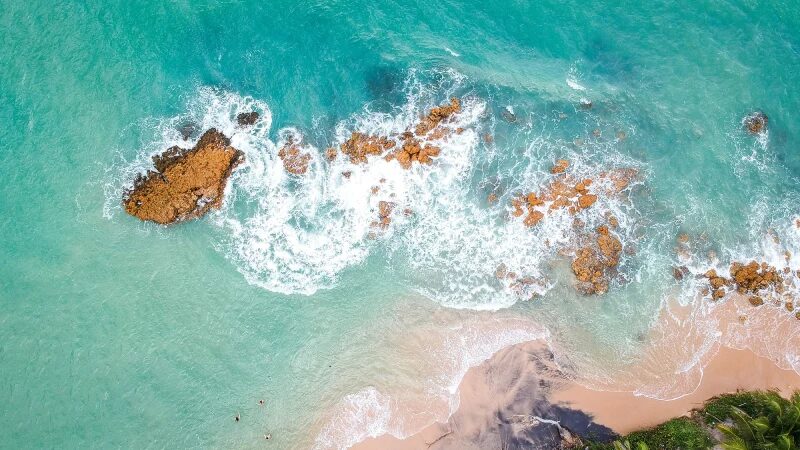The vacation rental gold rush isn’t over, it’s just smarter now.
You can’t just throw furniture into a condo, post it on Airbnb, and expect passive income. The platforms are saturated. Guests are more demanding. And regulations are tightening in all the wrong places.
But here’s the good news: 2025 is still full of massive opportunity if you know where to look. We’ve crunched the numbers, followed the travel trends, and filtered out the noise to give you seven top-tier markets where a serious short-term rental business can still scale — not just survive.
Whether you’re looking for international yield, domestic stability, or early-mover advantage, here are the top 7 places to launch a vacation rental business in 2025.
1. Barbados – High ADR, strong legal structure, global traveler appeal
Barbados checks nearly every box: high average daily rates (ADR), stable governance, clear short-term rental legislation, and a growing ecosystem of digital nomads, remote workers, and luxury travelers.
Tourism in Barbados rebounded aggressively post-COVID, and 2024 saw record-breaking arrivals. The average ADR in tourist-heavy parishes like Christ Church and St. James hovers around $250-$350, and occupancy rates stay strong at 65-75% depending on the season. Winter is peak, but thanks to year-round tropical weather and increased European interest, shoulder seasons are performing better than ever.
Barbados was also one of the first Caribbean nations to launch a 12-month digital nomad visa, which helped fill calendars during off-peak months. Add to that a legal system based on British common law and a strong framework for foreign investment, and you’ve got a scalable market with real upside.
Best for: Remote workers, luxury travelers, long-stay digital nomads
Watch out for: Higher upfront property prices, quality matters here
2. Belize – English-speaking, low entry cost, consistent demand
Belize is still one of the most affordable entry points in the Caribbean, but don’t let the price fool you – this market punches way above its weight in ROI.
With ADRs around $175-$250 and occupancy averaging 70-80% in areas like Ambergris Caye and Placencia, Belize properties regularly outperform more expensive neighbors. It’s one of the few Central American countries where English is the official language, which makes everything easier, from guest communications to legal contracts.
The government is actively pushing tourism growth, and short-term rentals are widely accepted. There’s a growing pipeline of direct flights from the U.S. and Canada, and the buyer demand hasn’t yet exploded, meaning inventory is still available at good prices.
Casiola is already building its footprint here, and the numbers make sense. With a well-designed property and the right marketing, scaling to 10-20 properties in this market is not just possible – it’s realistic.
Best for: North American travelers, adventure seekers, snowbirds
Watch out for: Infrastructure outside prime zones can be hit-or-miss — stick to tourist hubs
3. Dominica – Nature, yield, and early-mover advantage
If Belize is the hidden gem, Dominica is the unpolished diamond. It’s not overrun by tourists, but the ones who come – they love it. This island is all about waterfalls, hiking, diving, and escaping from the overbuilt resorts of the region.
Occupancy sits in the 60-70% range, but the guest quality is high, and properties tend to book longer stays. ADR in the main eco-lodging zones is $180-$220, and the average stay length is almost double that of your standard Caribbean guest.
The best part? Low competition. There simply aren’t enough quality rentals to meet rising demand. It’s the perfect play for anyone who wants to get in early, build a small portfolio, and dominate a niche.
Short-term rental regulation is minimal, but the government is starting to track data as part of its sustainable tourism framework. So far, they’re encouraging investment, not restricting it.
Best for: Eco-travelers, slow travelers, couples, off-the-grid professionals
Watch out for: You’ll need good boots-on-the-ground management, it’s still developing.

4. Guatemala (Antigua + Lake Atitlán) – Cultural demand, massive upside, low cost
Guatemala might not be on every investor’s radar yet, but it should be. Antigua is already a UNESCO-protected city with boutique hotels priced at $300+/night. Lake Atitlán has gone from backpacker secret to a destination with yoga retreats, wellness tourism, and expats buying land on the hillside.
ADRs range wildly, from $100 to $350, depending on the location and property, but so does the ROI. In places like Panajachel and San Marcos, well-positioned short-term rentals are seeing occupancy north of 75%.
Tourism to Guatemala is up 30% since 2019. Infrastructure is catching up, and short-term rentals are legal and largely unregulated. Combined with low property prices and high demand from U.S. and EU travelers, Guatemala is one of the highest upside markets in Central America.
Best for: Cultural travelers, backpackers, digital nomads, wellness seekers
Watch out for: You’ll need bilingual support. Don’t go in without local expertise.
5. New Orleans, USA – Urban yield + seasonal surges (for the brave)
Let’s be blunt: New Orleans isn’t for the faint of heart. The city has cracked down on short-term rentals, and it’s not as easy to operate here as it once was.
But if you play by the rules, and invest in the right zones with permits in place, the returns are still excellent. Events like Mardi Gras, Jazz Fest, and Saints season drive ADRs to $400-$600/night, and the rest of the year sees healthy demand from foodies, musicians, and conference-goers. The average ADR is around $225, with occupancy in regulated zones holding at 65-75%.
The game here is margin. If you lock down a legal unit in a high-performing neighborhood like the Marigny or the CBD, it can outperform five suburban homes elsewhere.
Best for: Party crowds, cultural tourists, high-frequency travelers
Watch out for: Very strict and shifting local regulations. You need a legal team or local partner.
6. Wawona, California (Yosemite Gateway) – Nature-driven demand with limited supply
Wawona is a sleepy pocket just outside Yosemite National Park — and that’s exactly what makes it so valuable.
With hotel availability inside the park extremely limited, vacation rentals in gateway towns like Wawona and Oakhurst often sell out months in advance. During peak seasons (spring, summer, fall foliage), occupancy rates can hit 90%, and ADRs climb to $300-$400, especially for homes with 3+ bedrooms or hot tubs.
What makes Wawona particularly appealing is scarcity. There’s not much inventory, regulations are manageable, and guest demand is predictable. This is a strong “lifestyle portfolio” play — own 3 to 10 homes here, automate with smart tech, and enjoy high occupancy without needing to compete on price.
Best for: National park tourists, families, photographers, hikers
Watch out for: Seasonal winter slowdowns, wildfire risk, and tight community politics
7. Gulfport, Mississippi – Underrated domestic growth + low barrier to entry
Everyone talks about Florida. No one talks about the Mississippi Gulf Coast — and that’s why it’s interesting.
Gulfport has seen a quiet tourism revival. There’s a mix of beach travelers, casino-goers, and snowbirds who don’t want to pay Florida or Texas prices. Short-term rental regulation is very favorable, and properties can still be picked up at under $150K–$250K, with ADRs at $150–$200 and occupancy pushing 70% in high season.
For investors wanting U.S. stability, Gulfport offers a unique combo: low startup costs, a growing local economy, year-round tourism, and low saturation. It’s not sexy, but it scales.
Best for: Budget family travelers, weekenders, snowbirds
Watch out for: Less pricing power – make it up in occupancy and operations
If you’re still looking at Miami or Barcelona, you’re late. Those days are done — over-regulated, overpriced, and impossible to scale unless you already own property there.
The smart 2025 investor is looking for high-demand markets with room to grow, favorable legal climates, and travelers who want more than just a place to sleep. These seven destinations, from the nature-rich corners of Central America to the underdog U.S. markets – are where the next big wins will happen.
So whether you’re looking to build your first short-term rental or expand your portfolio to 20+ homes, this list should be your starting point.
Want the full breakdown of revenue potential in these cities?
👉 Talk to the Casiola team and explore your expansion plan.
